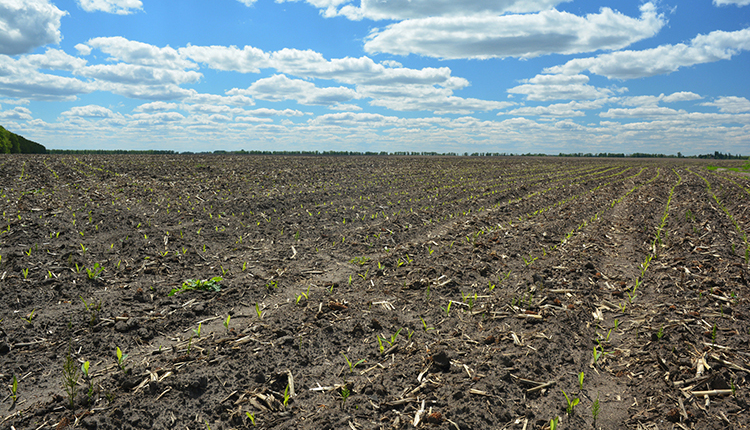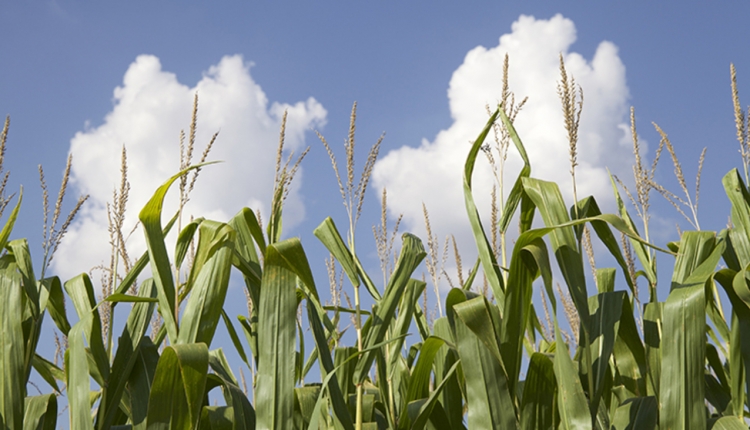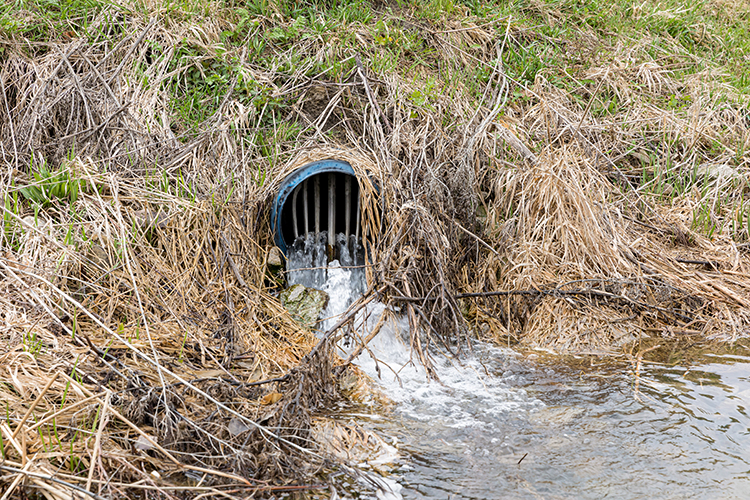
Drainage water management is a conservation practice that can help reduce nitrogen (N) losses in tile drainage from crop fields. Drainage water management, also known as controlled drainage, has been used successfully in the Mississippi River Basin to reduce the amount of N moving from cropland to the Gulf of Mexico. The practice works by slowing down the rate of tile drainage during the nongrowing season when there is no agronomic benefit to enhanced drainage.
This reduction in tile flow is accomplished by installing a “control structure” that intercepts the field’s main tile outlet and into which a series of plates, or stoplogs, are inserted. Without this set up, tile flow would occur in a freely drained system whenever the water table rose above the depth of the tile laterals in the field. However, with this control structure, you can choose to allow the water table to rise to a given level between the tiles and the soil surface before it drains from the field.

Common practice is to provide approximately 1 foot of soil drainage during the nongrowing season and 2.5 feet during the growing season. The stoplogs can be removed at any time and are typically removed about two weeks prior to any fieldwork if the conditions and forecast necessitate the additional drainage to ensure trafficability. Research has demonstrated that this modest reduction in subsurface drainage during the growing season can lead to yield benefits in abnormally dry years. This system also could have greater significance in the coming years if the projections by climatologists that we will continue to experience fewer, but more intense rainstorms are accurate.
Much of the cropland soils in the Lake Champlain Basin in New York, Vermont, and Quebec are poorly drained and benefit from systematic tile drainage. Although Lake Champlain is classified as impaired due to phosphorus (P) enrichment, the growing rates of tile drainage installation also have led to concerns regarding the amount of N being delivered to the lake. In 2015, a six-year paired field study was undertaken by Miner Institute in Chazy, N.Y. (within the Lake Champlain Basin) to test the effectiveness of drainage water management on N and P losses from corn silage fields receiving dairy manure after corn silage harvest.
As most of the studies investigating drainage water management have focused on N losses, the impacts on P loss are not well understood. One of the primary concerns as to the applicability of drainage water management in the Lake Champlain Basin was whether allowing the water table to rise closer to the surface could result in larger or more frequent surface runoff events, which are known to carry a high risk for P loss.
Over the duration of the study, tile drainage represented just over 75% of the total drainage from both fields, and surface and tile drainage during the nongrowing season generated 68% to 96% of annual totals. Tile drainage was responsible for approximately 90% of N losses, with 75% occurring during the nongrowing season. Conversely, 90% of P loads were generated by surface runoff, with greater than 90% of P losses from the nongrowing season.
Drainage water management research has demonstrated that N losses are typically reduced in direct proportion to the reduction of tile drainage, as there is frequently no change in the concentration of N in tile flows. However, the 18% reduction in tile discharge from the drainage water management field we observed was accompanied by a 14% reduction in N concentrations and ultimately resulted in an estimated 28% reduction of N loading from tile drainage during the nongrowing season.
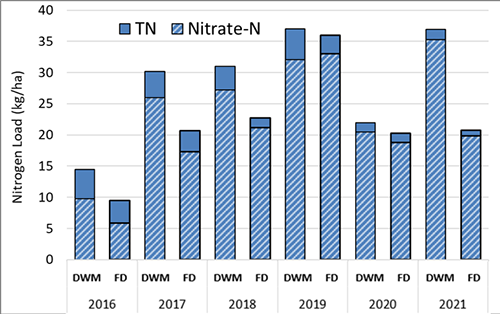
Unfortunately, surface runoff events during the treatment period were too few to determine whether there might be a tradeoff in P transport between tile drainage and surface runoff when drainage water management was used. Additionally, as most of the P loss occurred in surface runoff, there was no clear treatment impact on total P losses.
There was evidence that transport of dissolved reactive P, the bioavailable form of P, was reduced by 49% through a combination of flow and concentration reductions. However, as illustrated by the graph of annual P loads by field, annual dissolved reactive P loads were so low in three of the four treatment years that we need to be cautious in trying to generalize this data to years or fields with higher levels of dissolved reactive P loss from the tiles.
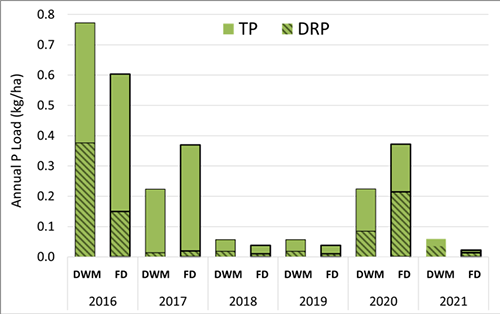
Ultimately, our results were in line with other studies that have found similar rates of drainage and N reductions. While future research should focus on fields that are known to have elevated rates of P in tile drainage, as well as fields that have some risk of surface runoff, these results from one of the first studies to examine drainage water management in the northeastern U.S. were promising.
Although not utilized for this project, automated technology and cloud-based management of the control structures have made this practice much easier to manage than in years past. Current research also is working to incorporate artificial intelligence so that the stoplogs can be controlled by a program, further reducing the labor needs to the farmer, and likely increasing the overall efficacy of drainage water management. A lower cost of implementation than many practices (including federal cost-share opportunities), plus the ability to implement it field by field, means that farms can test out the practice without requiring much up-front investment or the need for a major overhaul in equipment or field management.







